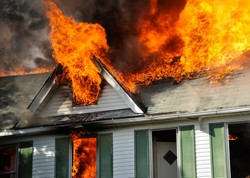Innovative flame retardants to keep fires at bay
In the quest to improve fire safety, flame-retardant additives are added to materials that are currently dominated by compounds containing halogens such as brominated flame retardants (BFRs). Usually, these are used in combination with antimony oxides to reduce the likelihood of ignition and/or reduce the rate of flame spread and ultimately the spread of fire. However, such halogenated compounds increase the amount of smoke and toxic decomposition of the products involved during polymer combustion. The EU-funded WOOD-FLARETCOAT(opens in new window) (Flame-retardant coatings based on nano-magnesium hydroxide, huntite and hydromagnesite for wood applications) project set out to introduce several promising alternatives to BFRs. This was done by developing non-halogenated flame-retardant systems based on inorganic flame-retardant nanofillers, namely nano-magnesium hydroxide, huntite and hydromagnesite. Work began by preparing and characterising a broad range of flame-retardant fillers and reactive oligomers. The most promising fillers were chosen following testing. Project partners prepared several coatings in the lab by incorporating the selected fillers into various polymeric matrices. They then assessed the coatings' general properties and fire performance, leading to the first selection of basic formulations. Metal nano-oxides were incorporated into the mixtures to check scratch resistance, antibacterial activity and photocatalytic capacity. After the best mixtures were chosen, semi-industrial lines were designed, assembled and optimised that are able to produce the fillers and coatings. Several products were successfully obtained, and modifications were performed on the final formulations and production procedures. The WOOD-FLARETCOAT team validated the most interesting formulations through demonstrations. The coating displayed significant applicability and final film quality, and provided the wood with noteworthy fire protection when compared to untreated wood. Assessments showed that such coating is cost effective and has a very low environmental impact. The competitively priced, environmentally sound WOOD-FLARETCOAT flame-retardant coatings should become a key component of fire safety, ultimately saving lives.







